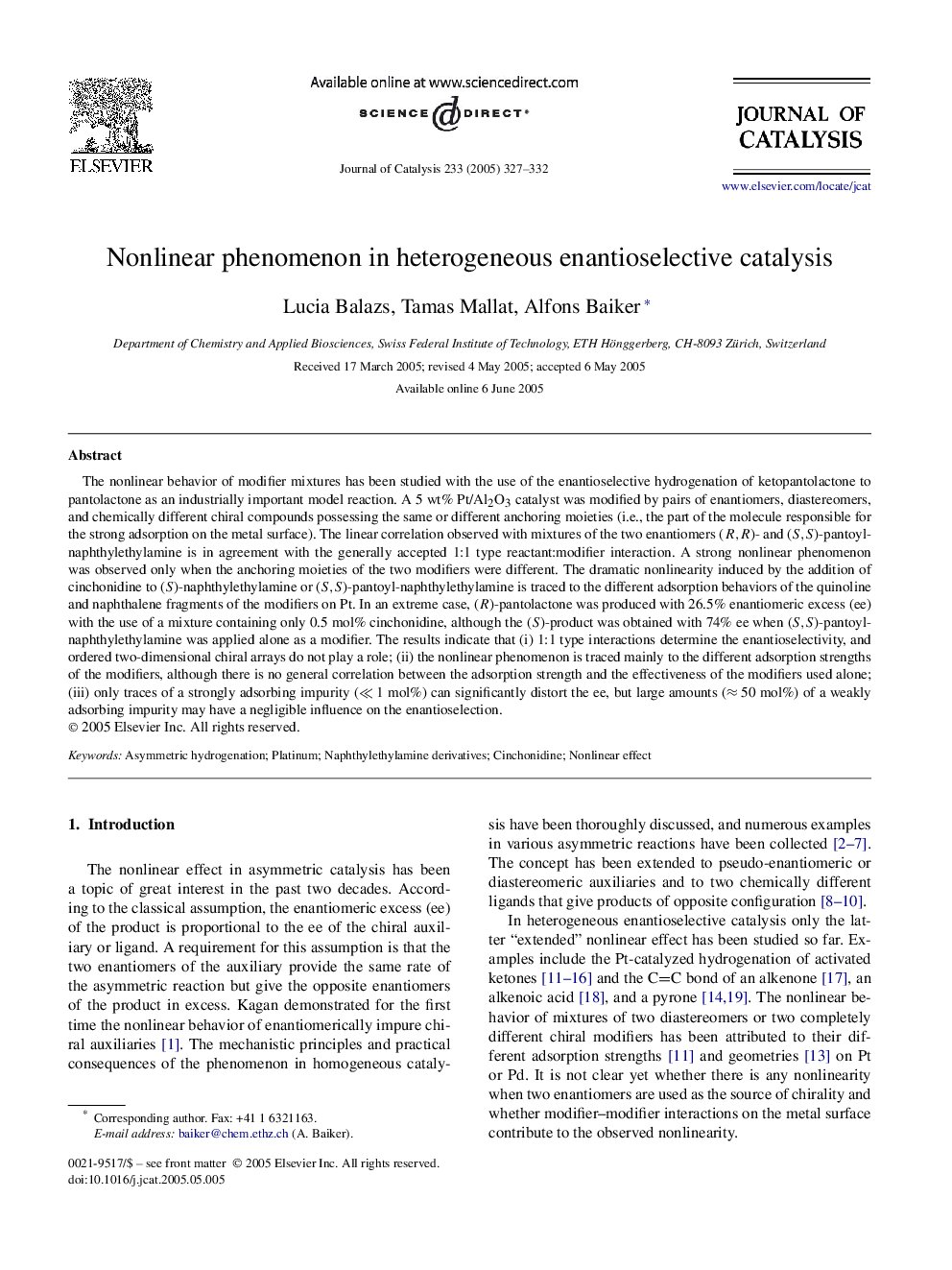| کد مقاله | کد نشریه | سال انتشار | مقاله انگلیسی | نسخه تمام متن |
|---|---|---|---|---|
| 10244478 | 47690 | 2005 | 6 صفحه PDF | دانلود رایگان |
عنوان انگلیسی مقاله ISI
Nonlinear phenomenon in heterogeneous enantioselective catalysis
دانلود مقاله + سفارش ترجمه
دانلود مقاله ISI انگلیسی
رایگان برای ایرانیان
کلمات کلیدی
موضوعات مرتبط
مهندسی و علوم پایه
مهندسی شیمی
کاتالیزور
پیش نمایش صفحه اول مقاله

چکیده انگلیسی
The nonlinear behavior of modifier mixtures has been studied with the use of the enantioselective hydrogenation of ketopantolactone to pantolactone as an industrially important model reaction. A 5 wt% Pt/Al2O3 catalyst was modified by pairs of enantiomers, diastereomers, and chemically different chiral compounds possessing the same or different anchoring moieties (i.e., the part of the molecule responsible for the strong adsorption on the metal surface). The linear correlation observed with mixtures of the two enantiomers (R,R)- and (S,S)-pantoyl-naphthylethylamine is in agreement with the generally accepted 1:1 type reactant:modifier interaction. A strong nonlinear phenomenon was observed only when the anchoring moieties of the two modifiers were different. The dramatic nonlinearity induced by the addition of cinchonidine to (S)-naphthylethylamine or (S,S)-pantoyl-naphthylethylamine is traced to the different adsorption behaviors of the quinoline and naphthalene fragments of the modifiers on Pt. In an extreme case, (R)-pantolactone was produced with 26.5% enantiomeric excess (ee) with the use of a mixture containing only 0.5 mol% cinchonidine, although the (S)-product was obtained with 74% ee when (S,S)-pantoyl-naphthylethylamine was applied alone as a modifier. The results indicate that (i) 1:1 type interactions determine the enantioselectivity, and ordered two-dimensional chiral arrays do not play a role; (ii) the nonlinear phenomenon is traced mainly to the different adsorption strengths of the modifiers, although there is no general correlation between the adsorption strength and the effectiveness of the modifiers used alone; (iii) only traces of a strongly adsorbing impurity (âª1 mol%) can significantly distort the ee, but large amounts (â50 mol%) of a weakly adsorbing impurity may have a negligible influence on the enantioselection.
ناشر
Database: Elsevier - ScienceDirect (ساینس دایرکت)
Journal: Journal of Catalysis - Volume 233, Issue 2, 25 July 2005, Pages 327-332
Journal: Journal of Catalysis - Volume 233, Issue 2, 25 July 2005, Pages 327-332
نویسندگان
Lucia Balazs, Tamas Mallat, Alfons Baiker,